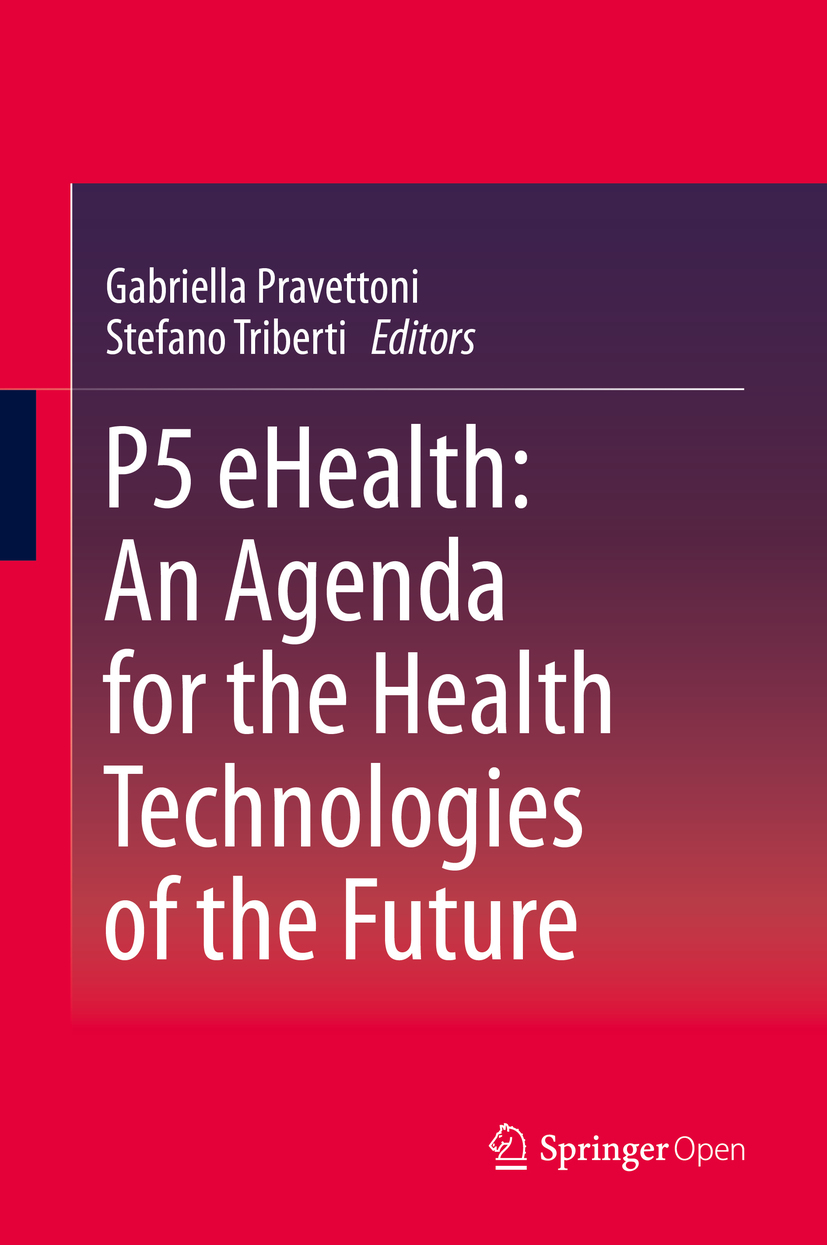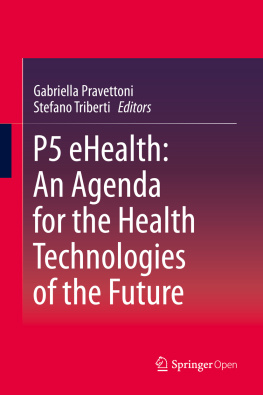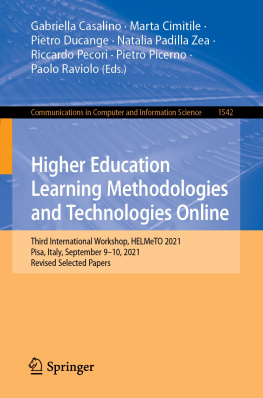Gabriella Pravettoni - P5 eHealth: An Agenda for the Health Technologies of the Future
Here you can read online Gabriella Pravettoni - P5 eHealth: An Agenda for the Health Technologies of the Future full text of the book (entire story) in english for free. Download pdf and epub, get meaning, cover and reviews about this ebook. year: 2020, publisher: Springer International Publishing, genre: Romance novel. Description of the work, (preface) as well as reviews are available. Best literature library LitArk.com created for fans of good reading and offers a wide selection of genres:
Romance novel
Science fiction
Adventure
Detective
Science
History
Home and family
Prose
Art
Politics
Computer
Non-fiction
Religion
Business
Children
Humor
Choose a favorite category and find really read worthwhile books. Enjoy immersion in the world of imagination, feel the emotions of the characters or learn something new for yourself, make an fascinating discovery.
- Book:P5 eHealth: An Agenda for the Health Technologies of the Future
- Author:
- Publisher:Springer International Publishing
- Genre:
- Year:2020
- Rating:4 / 5
- Favourites:Add to favourites
- Your mark:
- 80
- 1
- 2
- 3
- 4
- 5
P5 eHealth: An Agenda for the Health Technologies of the Future: summary, description and annotation
We offer to read an annotation, description, summary or preface (depends on what the author of the book "P5 eHealth: An Agenda for the Health Technologies of the Future" wrote himself). If you haven't found the necessary information about the book — write in the comments, we will try to find it.
P5 eHealth: An Agenda for the Health Technologies of the Future — read online for free the complete book (whole text) full work
Below is the text of the book, divided by pages. System saving the place of the last page read, allows you to conveniently read the book "P5 eHealth: An Agenda for the Health Technologies of the Future" online for free, without having to search again every time where you left off. Put a bookmark, and you can go to the page where you finished reading at any time.
Font size:
Interval:
Bookmark:



Open AccessThis book is licensed under the terms of the Creative Commons Attribution 4.0 International License (http://creativecommons.org/licenses/by/4.0/), which permits use, sharing, adaptation, distribution and reproduction in any medium or format, as long as you give appropriate credit to the original author(s) and the source, provide a link to the Creative Commons license and indicate if changes were made.
The images or other third party material in this book are included in the book's Creative Commons license, unless indicated otherwise in a credit line to the material. If material is not included in the book's Creative Commons license and your intended use is not permitted by statutory regulation or exceeds the permitted use, you will need to obtain permission directly from the copyright holder.
This Springer imprint is published by the registered company Springer Nature Switzerland AG.
The registered company address is: Gewerbestrasse 11, 6330 Cham, Switzerland
The idea of this book emerged within the discussion of the implementation and resources of a Europe-funded project (IManage), especially regarding the utilization of an eHealth platform. eHealth is regarded as a fundamental resource for care nowadays, to the point that a growing number of scientific publications involve some form of web-based and/or immersive technologies devoted to improve patient adherence to treatment and healthy activities, patient education, and even the monitoring of mental health outcomes such as stress, emotions, as well as biases potentially affecting health-related decision-making.
Engage patients in personalized treatment as well as management plans: patients should become competent, active, responsible managers of their own health
Analyze and improve quality of life not as a secondary but as a primary objective of the care process
Originally, the P5 approach as described here was not explicitly related to technology, but of course, eHealth constitutes an unprecedented opportunity to pursue all the five Ps within the healthcare process. In light of this concept, the present book is aimed to give examples, guidelines, suggestions, and methods to achieve the development of health technologies able not only to support health management but also to capture and exploit the personologic uniqueness of each individual.
In the contemporary scenario, where the main challenge faced by the healthcare systems worldwide is not to cure a specific disease but to support the management of incurable, chronic conditions and to guarantee long-term care to patients and survivors, such approach could be crucial to ensure that health technologies will be used and demonstrate their utility in the long term.
In this book, each one of the 5 Ps will be explained in depth by the authors with a specific expertise, with a focus on how they could be achieved through the use of specific health technologies; secondarily, other contributions will explore important aspects of eHealth design, implementation, and management.
Chapter, written by the editors of this book, will present the P5 approach and link it to eHealth, along with a short resume of health technologies themselves and considerations about their present and future.
Chapterwill present the IManage project and its technologies, in order to elaborate on them as an example of eHealth platform that has been designed and will be improved exactly on the basis of the P5 approach.
Chapterwill explore the first P, namely,prevention: the opportunities of new technologies for the forecast of future diseases and health issues will be described.
Chapterwill explore the concept ofpersonalizedmedicine and will show that digital media can be used by patients both to express themselves and to communicate with health providers and by health providers to better comprehend patients personal experience.
Chapterwill be focused on computational model and approaches to analyze and interpret data in order topredictfuture state of patients and illnesses; according to recent studies, this could be done not only with genetic and anatomical data but also with psychological and behavioral information.
Chapterwill present and comment on examples of specific technological features (coming from IManage technologies again and from other digital solutions) that could be used effectively to promote the active
Font size:
Interval:
Bookmark:
Similar books «P5 eHealth: An Agenda for the Health Technologies of the Future»
Look at similar books to P5 eHealth: An Agenda for the Health Technologies of the Future. We have selected literature similar in name and meaning in the hope of providing readers with more options to find new, interesting, not yet read works.
Discussion, reviews of the book P5 eHealth: An Agenda for the Health Technologies of the Future and just readers' own opinions. Leave your comments, write what you think about the work, its meaning or the main characters. Specify what exactly you liked and what you didn't like, and why you think so.













